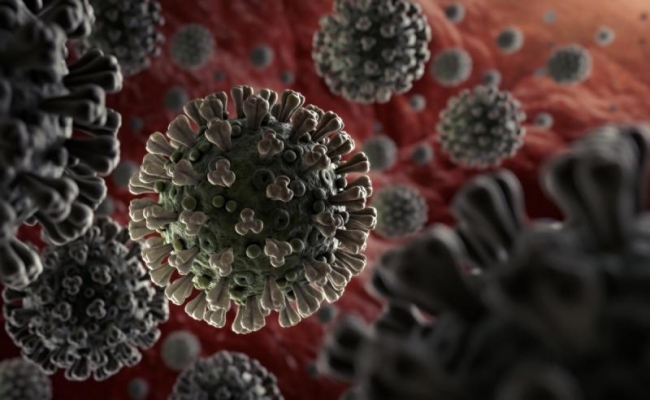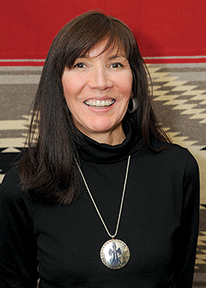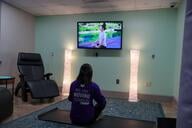You have /5 articles left.
Sign up for a free account or log in.

ISTOCKPHOTO.COM/FPM
Another week, almost another month.
It's weird to think that parts of the country may be opening up soon. And concerning to think about what might happen as a consequence of those choices.
Let's not dwell on those thoughts now. Instead, here are some palate cleansers (or, perhaps, we could call them "reality chasers") with which to clear your mind.
I have seen this cursed video of a talking cat from American University, and now you all must, too.
This is not a cursed video. It's simply a way for me to vicariously live through fit people as I continue to avoid running. It's also just generally cool.
Need a chuckle? Mashable rounded up some of the best tweets of the past week. (Featuring Big Poppa, and absent the giant baby drama.)
Let’s get to the news.
Antitrust lawyers are concerned that colleges may be colluding to not lower tuition prices for online semesters, which would violate antitrust laws. They allege prominent universities already have met to discuss canceling open houses for international students.
The American Association of State Colleges and Universities criticized Education Secretary Betsy DeVos's decision to exclude students in the Deferred Action for Childhood Arrivals program from federal emergency grant funds.
Another college said it intends to open in the fall. This time, it's the University of Mary Washington, a public university in Virginia.
Rutgers University in New Jersey announced it's facing a revenue shortfall of $200 million -- and plans to freeze hiring, slash salaries and pause construction projects.
A survey found that 35 percent of summer internships have been canceled. The economic prospects for Gen Z are not looking good.
Here’s a quick roundup of our latest stories, in case you’ve fallen a bit behind (we don’t blame you):
Colleges scrambled together some semblance of a spring term just in time. There are plans for a mostly remote summer. But what about fall? Lilah Burke delves into what's on everyone's minds.
Athletics departments are cutting programs, and college athletes are losing what they worked hard for, Greta Anderson reports.
Marjorie Valbrun has the story on how stimulus funding is helping black colleges weather this storm.
News From Elsewhere
EdSurge looked at how residential colleges can sell an online experience.
Education Dive has a story on how college counseling offices are contracting with remote counseling companies to help students.
Could antibody testing help colleges reopen safely in the fall? The Chronicle of Higher Education reports on the complications that could come with that.
Percolating Thoughts
This is a time when everyone has an opinion. As journalists, we try not to have opinions, but we've gathered some interesting ones from others.
A college president and student body president urge people to connect across generations and use that collaboration to get through the pandemic.
The president of the Institute for College Access & Success wrote in Forbes about what he thinks Congress should do to help colleges.
I spoke last week with Carrie Billy, president of the American Indian Higher Education Consortium, about how tribal colleges and their students are dealing with the pandemic. The conversation covered a lot of important ground and got a bit emotional because of what's at stake. I know it's a Monday morning, but I highly recommend you keep reading. 
Q: Some reports say the number of COVID-19 cases in tribal nations is rising quickly. Are people in the tribal-college communities fearful?
A: I think it’s regional, kind of like it is around the country. Originally, people at the tribal colleges probably thought it would not be as bad in rural America, and because the ability of people to social distance is a little easier. They were worried and definitely were following the governors' and the tribal leaders’ recommendations and then mandates, but now we’re seeing how quickly it can spread in rural America and Indian country. And then there are the challenges that everyone’s read about -- the lack of water in a number of homes, lack of electricity, very few hospitals, mostly just the Indian Health Service facilities.
People are becoming more worried, but I think the tribal colleges and Native people in general, we just had a lot of hardship and lived through a lot of hardship. I think people have that kind of feeling -- this is another challenge that we will come through together.
Q: Have all tribal colleges gone online due to coronavirus?
A: They’ve all gone online or to some form of distance education, because again, tribal colleges are rural, so some didn’t feel like moving predominantly online would work for them. So they’re doing the old-fashioned distance education. Whether that’s online, by telephone or teleconferences, or sending out packets and then students are taking their packets, having phone calls with their faculty, and then they deliver packets back to the library book drop at the college.
We always saw American Indians as resilient, but everyone is resilient in times like this. So whatever works, they’re doing.
Q: What are the biggest challenges institutions are facing with that switch?
A: One of our biggest challenge right now is with career education. Tribal colleges are primarily two-year institutions, although a number offer four-year degrees. But really they’re place-based institutions that are focused on their communities, so they do a lot of workforce development, career and technical education. Figuring out how to offer those courses so students don’t get too far behind is one of our biggest challenges.
Another challenge is moving to an entirely new way of teaching and learning with very little preparation. That’s a challenge that fortunately, or unfortunately (but at least we’re in this together), all institutions of higher education are facing. But for tribal colleges, it’s worse because we’re trying to do it in a part of the country that has very little access to the internet. The tax credits for internet service providers to provide hotspots for students to take home and access the internet -- those don’t work for most of our students in our communities because there are no towers for those hotspots to access.
What we’re finding with our colleges is that they’re going to have put in the community internet access. So not only are they shifting to online learning or different forms of education, but they’re also having to put in community-based hotspots. The idea is that students would then have an access point that’s closer to their homes than the college, because some of them are driving 100 miles, 50 miles one-way to go to school. So, an access point closer to homes, and then they sit in their cars and do their homework or participate in the course.
Q: So, are tribal colleges essentially building their own infrastructure?
A: They are building their own infrastructure of internet. A lot of it can be done fairly reasonably priced if you’re working with the right people. It’s still expensive, but not nearly as expensive as laying fiber, which would be extremely time-consuming. Right now, students are coming to the colleges and sitting in the parking lots of the college in their cars.
Q: What are the biggest challenges students are facing?
A: One of the positive things is that all the presidents and faculty I’ve talked to over the past few weeks have said that students are adjusting remarkably well. We thought it was going to be horrible and that they were going to have a really difficult time. But most students, if they can get internet access, are adjusting.
There are lower dropouts. There are still some students who the colleges haven’t been able to find. But because tribal colleges are place-based, really focused on their students and student success, and looking at the students holistically, the faculty are calling students, really engaging with them to get them to come to class online. That’s one of the most positive things about this whole experience, that our students are really showing up and committed to education.
The biggest challenges that they’re facing are just financial challenges. Even before this, financial challenges were the No. 1 issue affecting tribal college students and the stopping out of our students. Now, you have whole families in very small houses trying to survive without incomes or very low income. That’s why things like the Department of Education’s emergency student aid, the American Indian College Fund emergency aid program, those kinds of things so we can just help our students live their lives so they have the space to continue their education, are really critical. About 80 percent of our students are Pell-eligible, prior to this, so that kind of gives you the idea of the needs.
A couple other issues -- it’s all related to lack of equipment. They don't have laptops at home, and our colleges don’t have enough laptops right now for most students to check out a laptop. That’s another reason some of them are sitting in the parking lot, because they actually come to the school, check out a laptop, take it to their car, access the internet, do their work. Some colleges have bought phones so they’re able to access internet from a hotspot that the colleges are putting up. But just trying to get the equipment to the students is the other big challenge. Once they have that, we think that they’re doing pretty well.
Q: Are most students losing their jobs?
A: If they work at the tribal college, they are being protected. Others, we have a number of casinos, and all of those are shut down. Stores are closing. So that’s a big challenge for our students. Not just the students, but their families that they’re living with.
The majority of our students, like all community college students, are part-time students. The only downside for us about the Department of Education’s emergency student aid formula is that it’s heavily weighted toward residential, large institutions. The more part-time students an institution has, the lower their funding level because of the estimates that the Department of Ed is making.
It maybe should be opposite, because, if they’re already working, they clearly need the income to survive and to go to school. If you take away their ability to work and then their ability to access emergency aid is less than a student who was at a larger institution going full-time, it makes it difficult. We’re dealing with it. There has to be some formula, and unfortunately it’s that.
Q: How are colleges dealing with that? We’ve seen some institutions close or talk about mergers. Are any tribal colleges thinking about those things?
A: It doesn’t look that bad yet. But it could be that it’s because we have been so focused on just getting through to the end of the semester. Our schools are just, over the past week or so, beginning to look more long-term. There are a couple factors that maybe are a little unique to tribal colleges that make the situation dire.
If they close, it’s not going to be for the same reasons that the small liberal arts schools close -- students dropping out, or not coming back and living on campus. Our tribal colleges are dependent on the federal government for their institutional operation funds because of treaty obligations and trust responsibility. Hopefully that will continue.
But because that support from the federal government is so low and our tuition is very low, they also get some supplemental support from the tribes. Not all the tribal colleges, but a lot do. Last year, tribal colleges got about $33 million in operating funding from their tribes.
Some tribes have already told the colleges you’re getting cut, we’re not going to be able to provide that, so expect a 20 to 50 percent cut, a 100 percent cut. One tribe gives a payment to the college in two installments throughout the year, and they’ve already told them, “We’re not going to be able to make the second payment.” So that’s an immediate loss of funds. When you’re looking at small institutions and small budgets, that’s a lot of money to be taken out, so that’s a real worry for us.
Declining enrollment means lower tuition, even though we have pretty low tuition. The average tuition is less than $4,000 per year for a four-year degree. But it’s still a loss of income, and it starts adding up. Every year the colleges write off about $4 million in tuition payments. We expect that’s going to be higher next year.
When you start looking long-term, it does get bleaker.
Q: What do you think the long-term effects of this pandemic will be on those the tribal colleges serve?
A: Tribal colleges were created to do two things. One, to preserve their tribe’s culture, language, history and traditions. The loss of that is just inconceivable.
You might have heard some of the Navajo people talking about elders, who are most at risk. Northern Cheyenne Chief Dull Knife College has fewer than eight native speakers, except for the people who are being trained at the tribal college. If we lose them and then we lose the college, we’ve lost tribes and tribal identity. That is something that we cannot allow to happen.
The other reason is workforce development, to help lift our communities out of generational poverty, to be strong sovereign tribal nations, to determine their own destiny. To not have the workforce development, the career opportunities, the training of tribal foresters, water hydrologists, nurses, Native teachers -- that just sets us back generations. So we will not let that happen.
Q: What do you plan to fight for to prevent that from happening?
A: We’re continuing to work with Congress to try to allocate funding for tribal colleges in emergency legislation, the CARES Act and in future bills.
We work with our tribes and also work with our other partners. We have a coalition with our minority-serving institutions who are all coming together to advocate collectively for our needs, which has been tremendously helpful. We’re also creating coalitions with other Native organizations and programs.
Tribal colleges train in their communities the vast majority of nurses and other workers at Indian Health Service facilities. We’re working with them to try to get the message out for the need to holistically provide support. We’re not just asking for funds -- it really is an investment in the future of Native America.
I noticed one thing that the Department of Education said. They had a listening session on the funding from the education stabilization fund on Friday. One half of 1 percent goes from Department of Education to the Bureau of Indian Education. Someone from the Department of Education put at the bottom of the session's announcement something like, "Should all the money go to K-12, or should it go to tribal colleges as well? Because tribal colleges, it should be noted, got $20 million in the CARES Act."
Twenty million dollars for 35 institutions is barely a drop in the bucket. So for someone at the Department of Education to say something like that is just unbelievable. They're trying to create tension and dissension among Indian tribes and Indian programs when we all should be working together.
Q: What would help tribal colleges get through this?
A: We think that what was in the CARES Act is tremendously helpful, and we are so grateful for that. The emergency student aid -- our colleges are so excited to be getting that money, to get it out to the students, so that’s critically important. The foundation that was laid in the CARES Act is really great.
What we need in the future is what everyone needs. We just need the support, the investment to continue until we get over this challenge. Then tribal colleges will continue to survive and flourish and serve their tribes and their nations just like they always have done. We think it’s just a short-term need, but it’s not something that can stop. I don’t think the programs need to change, it’s just that the resources need to be committed.
Q: How did we get to this point, where tribal colleges and nations are struggling with the switch to remote learning so much?
A: It’s kind of that equity question where, if you just continue things the status quo, giving equal amounts of funding or using a percentage funding to fund different programs, we’re never going to catch up. That’s the situation we’re in now, particularly with our federal programs.
Our Title III programs, or even our operating funding, Congress will increase by a certain percentage every year or not increase for several years. But because we have been historically underfunded, we’re never going to dig out of the hole we’re in. People need to shift the way they’re looking at funding programs and look at equity and the real needs of institutions and the students we’re serving. If they don’t do that, it’s not going to change, we’re going to continue to struggle. We’ll do the best we can, but we’ll continue to struggle.
This is really sad. We’re all working from home, but we had these boxes of old [American Indian Higher Education Consortium] archives, so I brought some of them home to go through. I found testimony from 1978, which doesn’t seem like that long ago, but that was the year that Congress authorized the Tribally Controlled Colleges and Universities Assistance Act. That authorizes the operating for funding for most of the tribal colleges because of treaty obligations and trust responsibility.
I read that testimony. Basically, I could just erase the date and the number of colleges, and the requests, the needs are the same. It’s really, really sad to think 45 years later, our needs have not changed.
The infrastructure isn’t there. The colleges are in better facilities, but the communities are facing the same challenges, our colleges are facing the same challenges.
It’s the same with the digital divide. We worked on a big initiative in the early 2000s to get tribal colleges at least one T1 line, because most of them at that time had dial-up internet access. Now, you look at the Verizon map or the AT&T map of this country, you can tell where Indian country is, because it’s all the places that there are big voids on those cellular phone maps.
It just doesn’t change because we’re a small percentage of the population. We don’t have a lot of representation, particularly in the House. It’s hard to get people to prioritize funding for our institutions and our people.
Q: Is there anything else you'd like to add?
A: We will get through this.
We have weekly calls with our presidents, and we try to do weekly webinars with the colleges. We start every one of them with a prayer and end them with a prayer, and it’s just really great to feel that sense of community even though we can’t be together.
That’s what keeps us going, I think that’s what keeps all of us going. We all have better days ahead, and we will get through this together.
Have any percolating thoughts or notice any from others? Feel free to send them our way or comment below.
We’ll continue bringing you the news you need in this crazy time. Keep sending us your questions and story ideas. Like Billy said, we’ll get through this together.




